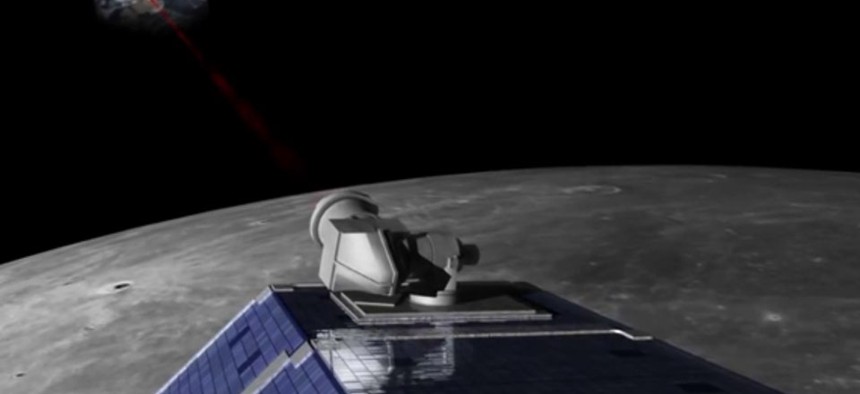Moon Lasers Are Creating the Galaxy’s Fastest Internet

NASA
Want this article to load more quickly? Read it in space.
Hong Kong has the world's fastest Internet. Internet on the moon is 10 times faster.
How do our lunar-exploring spaceships get buffer-free video? Lasers. NASA and MIT are shooting " lasers full of Internet " to a ship named LADEE that's exploring the moon's atmosphere. According to NASA, speeds have reached 622 megabits per second (Hong Kong tops out at 63.6).
Right now, the agency is using a pulsed laser beam to transmit a pair of HD video signals to and from the moon. The 239,000 miles between the New Mexico ground station and the moon marks the "longest two-way laser communication ever demonstrated," according to NASA.
In one test , NASA sent an HD video of Bill Nye (the science guy) from a Massachusetts station to the New Mexico transmitters to the moon—and back through the same route—with just a seven-second delay. It takes 1.3 seconds for a signal to make the one-way trip to the moon.
NASA says the information it's receiving now is so precise it can determine LADEE 's distance from Earth to within half an inch.
"Suppose you wanted to make a Google Maps image of Mars, and not even as crisp as Google Maps," NASA's Don Boroson told the Institute of Electrical and Electronics Engineers. "It would take decades to send that much data back with radio systems we have now. If you had a laser communication system with a 50-times-higher data rate, it would take tens of weeks. Then you could send all the data for a Google Map in one year."
NASA says testing will soon expand to include signals from a European Space Agency station in Spain. Later tests will expand to include daylight operations and different cycles of the moon.
NEXT STORY: Now Your Phone Can Help Cure Cancer


